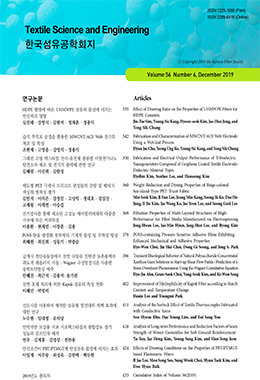This paper reports the development of an auxetic re-entrant (RE) pattern based on fused deposition modeling (FDM) 3D printing technology and the characterization of the mechanical properties of the samples. In addition, thermoplastic polyurethane (TPU) filaments of different hardness, i.e., 85A_TPU, 87A_TPU, 95A_TPU, and 75D_TPU, were used for the FDM 3D printed RE pattern and analyzed. We designed the RE pattern by arranging a single repeating unit. A stereolithography file of the RE pattern was prepared and converted into a g-code file for 3D printing. Finally, we examined the tensile behavior of the 3D printed RE patterns using TPU filaments of various hardness. Among the analyzed 3D filaments, 85A_TPU, 87A_TPU, and 95A_TPU were poly (ether-urethane), whereas 75D_TPU was polycarbonate polyurethane. It was confirmed that the thermal properties and stiffness of 75D_TPU were higher than those of 85A_TPU, 87A_TPU, and 95A_TPU because of the increasing hard-segment ratio. Additionally, based on the various hardness types of TPU filaments, the Poisson's ratio (ν) and the tensile properties of the 3D printed auxetic RE pattern were investigated. The 3D sample printed with 75D_TPU, which had a high hardness filament, was the stiffest, whereas samples printed with 85A_TPU showed the highest flexibility and achieved a significantly improved negative Poisson's ratio effect. Therefore, based on the mechanical properties of 3D printing auxetic samples and the hardness of TPU filaments, basic research data are provided for the fabrication of footwear functional auxetic pattern/textile composites using FDM 3D printing technology.


